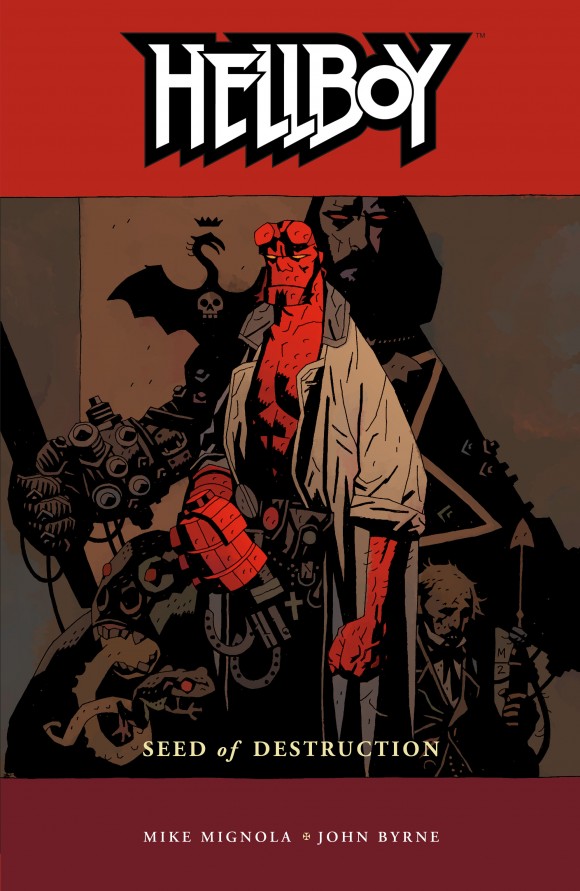HELLBOY WEEK: MIKE MIGNOLA TALKS LITERARY AND PULP INFLUENCES - AT 13TH DIMENSION

The first Hellboy collection.
Dark Horse has dubbed this Saturday, March 22 as Hellboy Day. If you’re reading this, you’re probably well aware of who Mike Mignola is and how considerable his impact on the comics industry has been. But it’s still an eye-opener to read his official bio:
MIKE MIGNOLA’s fascination with ghosts and monsters began at an early age; reading “Dracula” at age 12 introduced him to Victorian literature and folklore, from which he has never recovered. Starting in 1982 as a bad inker for Marvel Comics, he swiftly evolved into a not-so-bad artist. By the late 1980s, he had begun to develop his own unique graphic style, with mainstream projects like DC’s Cosmic Odyssey and Batman: Gotham by Gaslight. In 1994, he published the first Hellboy series through Dark Horse. As of this writing there are 12 Hellboy graphic novels (with more on the way), several spinoff titles (B.P.R.D., Lobster Johnson, Abe Sapien, and Sir Edward Grey: Witchfinder), prose books, animated films, and two live-action films starring Ron Perlman. Along the way he worked on Francis Ford Coppola’s film “Bram Stoker’s Dracula” (1992), was a production designer for Disney’s “Atlantis: The Lost Empire” (2001), and was the visual consultant to director Guillermo del Toro on “Blade II” (2002), “Hellboy” (2004), and “Hellboy II: The Golden Army” (2008). Mike’s books have earned numerous awards and are published in a great many countries. Mike lives somewhere in Southern California with his wife, daughter, and cat.
In this first installment, Mignola and our Clay N. Ferno jump right in and talk about the literary and pulp influences behind everyone’s favorite demon — such as Conan and Solomon Kane.
By CLAY N. FERNO
Clay N. Ferno: Tell us what sort of literary influences come up in Hellboy.
Mike Mignola: It’s funny, I was doing an interview the other day and trying to pin down the roots of the Hellboy stuff — not comic book roots as much as they are pulp magazine roots.
I was listening to the 8 billionth comment about H.P. Lovecraft and I said “Yeah, that stuff is in there, but I think that the bigger, fundamental structure of the Hellboy stuff came from pulp magazine guys like Robert E. Howard and Manly Wade Wellman. Specifically the idea of this kind of character who kind of wanders around and runs into stuff. Also, the short story format, which, at least in most mainstream comics is not the most common way for doing stories, but after the first miniseries, I went quite a bit to doing short stories, and not just short stories, but short stories that don’t take place in a chronological order.
We saw this with Robert E. Howard doing Conan and Solomon Kane and these kind of characters that kind of wander all over the world and they’ll run a story on a character who is old, and then about when he is young, and it is for other people to cobble them all together into some kind of coherent order. I think that was very much informing the way I did Hellboy.
[READ MORE AT 13th DIMENSION]





